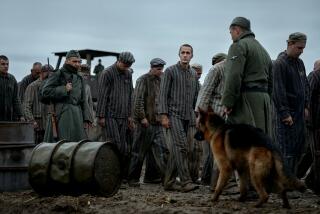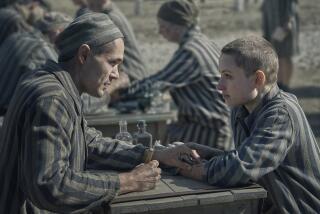School Project Spotlights Austria’s Role in Holocaust
VIENNA — Fred Friedman survived the Holocaust thanks to a Nazi border guard who recognized him as a Jew but let him slip out of Hitler’s Germany.
“Somebody could have observed him,” said Friedman, 77, who was 12 when he escaped in 1938. “And he would have had the same fate that we would have: death.”
The moral, he said, is that a single person’s defiance of a murderous regime can make the difference between life and death.
Friedman, a retired lawyer living in Clarence, N.Y., hopes to reinforce the lesson by participating in a project to help Austrian middle and high school students grasp the enormity of the Holocaust and its victims by focusing on individual stories.
“It’s important to fight racism and bigotry and to learn a lesson from the Nazi era -- to speak up,” said Friedman, who is also an honorary consul for Austria in Upstate New York.
He said a Swiss woman tried to smuggle him and his sister across the German border to France. But the guard recognized the boy from Salzburg, where the guard had been previously posted. Although he knew it was a ruse to save Jews, he let the group cross a bridge over the Rhine River, Friedman recalled.
He never knew the guard’s name, but can identify other non-Jews who helped.
“That is one of the things that affected me,” Friedman said. Slipping briefly into the language of his boyhood, he added: “Die vielen anstaendigen Leute” -- the many decent people.
The courage of non-Jewish rescuers is well known. Yad Vashem, the Israeli Holocaust memorial institute, has documented nearly 20,000 of those it calls “the Righteous Among the Nations.” British historian Martin Gilbert recently published “The Righteous: The Unsung Heroes of the Holocaust.”
But Austria is a country that only recently began probing its part in the Holocaust, and the school project is unprecedented in scale. Its second and final year began Jan. 27, the 59th anniversary of the liberation of the Auschwitz death camp.
In 2003, 15,000 children took part, ending in a ceremony May 5, Austria’s official day of Holocaust remembrance. At Vienna’s Heldenplatz, where Hitler addressed a jubilant crowd after he annexed Austria in 1938, children released 80,000 white balloons, many of them bearing letters addressed to the dead.
In the project, the children’s main assignment is to find the real story behind the numbers -- 80,000 Austrian Holocaust victims, 65,000 of them Jewish.
In the first year children who relied only on archival materials were sometimes frustrated by the lack of documentation, because Hitler exterminated not only his victims, but all traces of many of them, organizers said.
So this year, children have been asked to interview survivors or their descendants and to write about them. Andreas Kuba and Josef Neumayr, Austrian journalists who initiated the project, hope more survivors will come forward to share their accounts by registering at www.lettertothestars.at, their website.
The project has the blessing of Vienna’s Jewish community and Simon Wiesenthal, 95, the legendary Holocaust survivor who spent decades bringing Nazi criminals to justice.
“I am convinced” having children examine the fate of “a single victim of the Nazi regime illuminates where the loss of humanity can lead,” Wiesenthal wrote a January. “In this way, they can grasp the ultimate consequence of racial hatred and intolerance.”
Kuba and Neumayr were inspired by Karl Stojka, a Gypsy painter who, as a boy in Auschwitz, saw Jews being marched to the crematory wearing yellow stars. At night, he dreamed of seeing them “dead, in the night, as yellow stars in heaven.”
That inspired the project’s name -- A Letter to the Stars.
“I saw them,” Stojka remembered, “the people, the children, who were walking to the gas chambers in rows of four, without parents, totally still because they could no longer cry. And what appeared to be soft snow covering the ground the next day was their ashes.” Stojka told his story to two 14-year-old girls as part of the project. A short time later, in April, he died at age 71.
More to Read
Sign up for Essential California
The most important California stories and recommendations in your inbox every morning.
You may occasionally receive promotional content from the Los Angeles Times.










